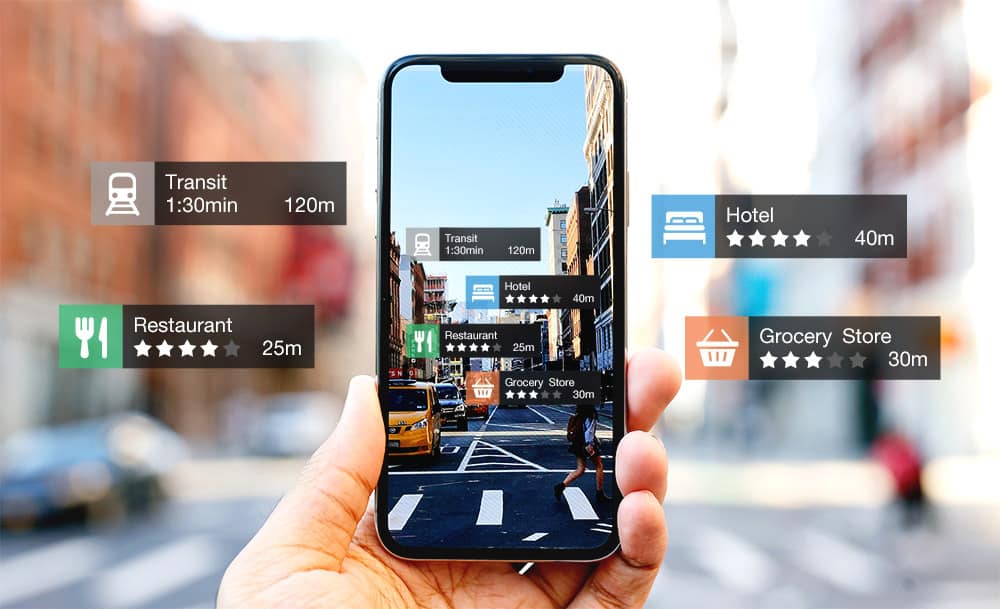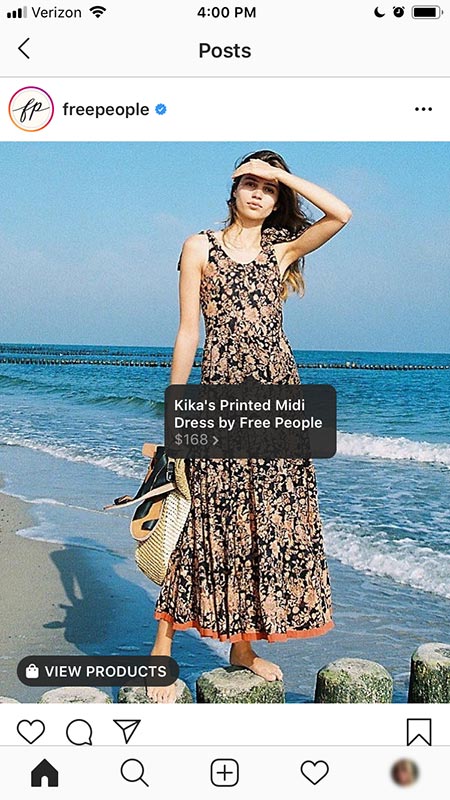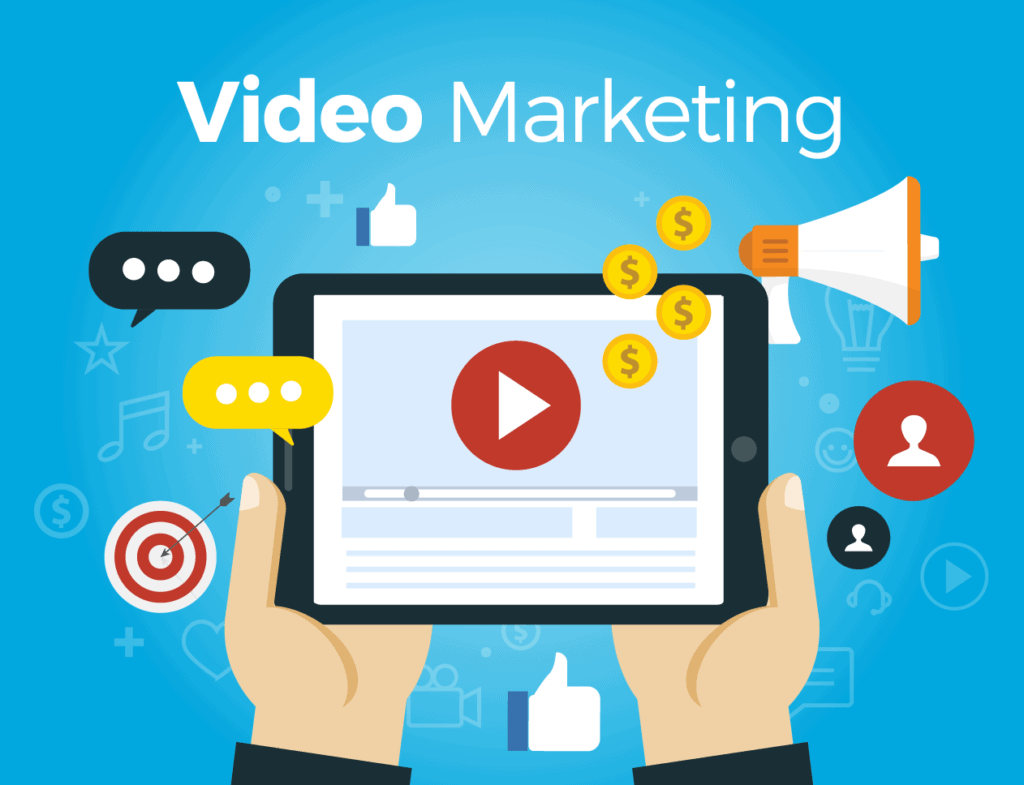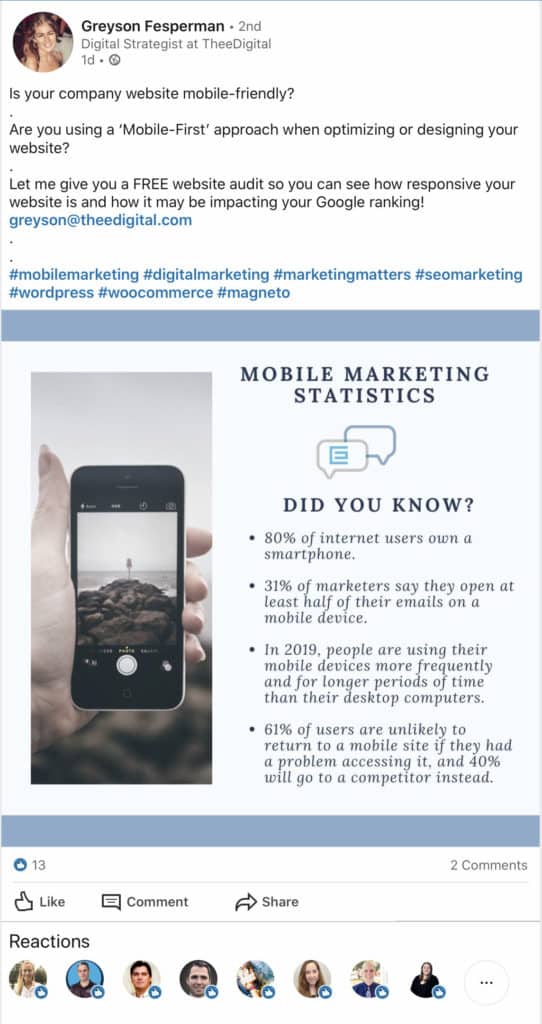The digital marketing landscape is constantly evolving, with new trends emerging that redefine how brands connect with their audience. In this article, we delve into the most significant digital marketing trends, offering insights and strategies to help businesses stay ahead in a rapidly changing environment.
Our digital marketing agency has to stay on top of current and future trends – so we’ve done the heavy lifting and research for you. As we move toward 2024, here are some of the digital marketing trends we’re keeping our eye on.
Digital Marketing Trends for 2024
The Rise of AI and Machine Learning in Digital Marketing
The integration of Artificial Intelligence (AI) and Machine Learning (ML) in digital marketing represents a seismic shift in how businesses approach customer engagement and campaign optimization. These technologies are not just futuristic concepts but practical tools that are reshaping the marketing landscape today.
Understanding AI and ML in Marketing
AI and ML refer to systems capable of learning from data, identifying patterns, and making decisions with minimal human intervention. In the context of digital marketing, these technologies are used to analyze vast amounts of data to glean insights about consumer behavior, preferences, and trends.
Personalization at Scale
One of the most significant applications of AI in digital marketing is the ability to personalize at scale. AI algorithms can sift through data to understand individual customer preferences and behaviors. This enables marketers to tailor their messaging and offers to each customer, creating a more personalized and engaging experience. For instance, AI can recommend products, customize email content, or even dynamically change website interfaces for different users.
Predictive Analytics
Predictive analytics is another area where AI and ML are making a big impact. By analyzing past consumer behavior and other data points, AI can predict future actions, such as the likelihood of a customer making a purchase. This allows marketers to target consumers with the right message at the right time, increasing the chances of conversion.
Enhanced Customer Insights
AI tools can process and analyze data from various sources, including social media, website interactions, and customer feedback, to provide a more comprehensive view of the customer. This deep understanding enables marketers to create more effective and targeted marketing strategies.
Chatbots and Customer Service
AI-powered chatbots are becoming increasingly sophisticated, capable of handling a wide range of customer service tasks. They can provide instant responses to customer inquiries, assist with purchases, and even offer personalized recommendations, improving the overall customer experience while reducing the workload on human staff.
Real-Time Decision Making
AI and ML enable real-time decision-making in marketing campaigns. For example, AI algorithms can optimize ad bids in real-time, adjust marketing messages based on current trends, or even change website content based on the type of visitor. This agility allows marketers to stay ahead in a fast-paced digital environment.
Ethical Considerations and Challenges
While AI and ML offer immense benefits, they also come with ethical considerations and challenges. Issues such as data privacy, algorithmic bias, and transparency need to be addressed. Marketers must ensure that AI is used responsibly, respecting consumer privacy and avoiding biases in AI algorithms.
The Future of AI in Marketing
The future of AI in marketing is bright, with ongoing advancements in technology. We can expect even more personalized and immersive experiences, smarter analytics, and increasingly autonomous marketing systems. As AI continues to evolve, it will become an indispensable tool in the marketer’s toolkit, driving innovation and efficiency in digital marketing strategies.
Voice Search Optimization in Digital Marketing
Voice search optimization is rapidly becoming a cornerstone in digital marketing strategies, as the prevalence of voice-activated devices like smart speakers, smartphones, and voice-assisted technologies continues to rise. This trend is reshaping the way consumers search for information online and, consequently, how businesses need to approach seo and content creation.
The Growing Importance of Voice Search
Voice search is not just a passing trend; it’s becoming a fundamental way in which users interact with technology. With improvements in natural language processing and the increasing convenience of voice-activated devices, more people are using voice search for their everyday online queries. This shift requires a reevaluation of traditional seo practices.
Understanding Voice Search Behavior
Voice searches are typically more conversational and longer than text-based searches. They often involve complete sentences or questions rather than the short, keyword-based queries used in traditional search. This difference means that content needs to be optimized to match the natural speech patterns and question-based format of voice searches.

Optimizing for Local seo
Voice search is particularly significant for local seo. Many voice searches are location-based, as users often look for services or businesses near them. Businesses need to ensure their local seo is robust, including accurate and up-to-date listings on Google My Business and other local directories, and incorporating location-specific keywords into their content.
Structuring Content for Voice Search
To optimize for voice search, content should be structured in a way that aligns with conversational queries. This includes using long-tail keywords and structuring content in a question-and-answer format. Websites should have clear, concise, and easily accessible answers to common questions related to their business or industry.
Leveraging Featured Snippets
Voice search devices often read out the featured snippet or the top result in Google’s search results. Therefore, optimizing content to appear as a featured snippet can significantly increase visibility in voice searches. This involves creating content that directly answers questions, using headers for easy content categorization, and providing concise, authoritative answers.
The Role of Schema Markup
Schema markup is a code that you can add to your website to help search engines return more informative results for users. Implementing schema markup can enhance the way voice search devices interpret and use the content of your website, making it more likely for your information to be used in voice search answers.
Mobile Optimization
Since many voice searches are performed on mobile devices, having a mobile-optimized website is crucial. This includes fast loading times, responsive design, and content that is easily navigable on a smaller screen. A mobile-friendly website enhances the user experience, which is a key factor in seo rankings.
Challenges and Future Directions
As voice search technology continues to evolve, businesses will face new challenges in optimizing their content for voice search. Staying updated with the latest trends in voice search technology, understanding user intent, and continuously adapting seo strategies will be essential for success in this area.
The Emergence of the Metaverse in Digital Marketing
The concept of the Metaverse, a collective virtual shared space created by the convergence of virtually enhanced physical and digital reality, is no longer just a science fiction trope. It’s rapidly becoming a pivotal element in digital marketing strategies, offering a new realm of possibilities for customer engagement and brand experiences.
Understanding the Metaverse
The Metaverse is an expansive network of 3D virtual worlds where users can interact, play, work, and socialize together in these computer-generated environments. It’s a blend of multiple elements of technology, including virtual reality (VR), augmented reality (AR), and video, where users “live” within a digital universe.


Marketing Opportunities in the Metaverse
- Brand Experiences and Virtual Spaces: Companies can create immersive brand experiences in the Metaverse. For instance, virtual showrooms where customers can explore products in a 3D environment, or virtual events and conferences that offer interactive experiences beyond the physical limitations.
- Virtual Goods and NFTs: The Metaverse opens up opportunities for selling virtual goods. Brands can create exclusive digital content, such as NFTs (Non-Fungible Tokens), which can be unique digital assets for users within these virtual worlds.
- Enhanced Customer Engagement: The Metaverse allows for deeper levels of customer engagement. Brands can interact with consumers in more meaningful ways, offering experiences that are more engaging and memorable than traditional digital platforms.
Challenges in Marketing within the Metaverse
- Navigating a New Environment: The Metaverse is a relatively new and continuously evolving space. Marketers need to understand its dynamics and user behavior, which can be vastly different from traditional digital marketing platforms.
- Technical and Creative Demands: Creating compelling content in the Metaverse requires a blend of technical know-how and creative design. Brands need to invest in the right talent and technology to build engaging virtual experiences.
- Privacy and Security Concerns: As with any digital platform, the Metaverse raises concerns about data privacy and security. Brands will need to navigate these challenges carefully to build trust with their audience.
The Future of the Metaverse in Marketing
The potential of the Metaverse in marketing is immense. As technology advances, we can expect more seamless integration of AR and VR, leading to more immersive and interactive experiences. The Metaverse could become a key platform for digital marketing, offering new ways for brands to connect with their audience and for consumers to experience brands like never before.
Preparing for the Metaverse
For businesses looking to step into the Metaverse, the key is to start small and learn. Experimenting with AR and VR, understanding the audience within these spaces, and staying updated with technological advancements are crucial steps. As the Metaverse grows, it will offer a new canvas for creative and innovative marketing strategies.
Social Commerce and In-Feed Shopping in Digital Marketing
Social commerce and in-feed shopping are transforming the way consumers discover and purchase products, blending social media experiences with e-commerce. This integration is redefining the shopping journey, making it more seamless and integrated into the daily digital interactions of consumers.
The Rise of Social Commerce
Social commerce refers to the process of selling products directly through social media platforms. It differs from traditional e-commerce in that it offers a more integrated and social shopping experience. Users can discover, research, and purchase products without leaving their favorite social media apps, making the process more convenient and engaging.
In-Feed Shopping: A Seamless Experience
In-feed shopping is a key component of social commerce. It allows users to purchase products directly from their social media feeds. This feature is particularly effective because it capitalizes on the user’s casual browsing behavior, presenting products in a context that feels less intrusive and more organic.


Advantages of Social Commerce
- Enhanced Customer Engagement: Social commerce enables brands to engage with customers where they spend a significant amount of their time. It provides an opportunity for brands to build relationships with customers through interactive and social content.
- Targeted Marketing: Social media platforms offer sophisticated targeting capabilities, allowing brands to reach specific audiences with personalized content and product recommendations.
- Increased Convenience for Customers: By reducing the steps to purchase, social commerce offers a more convenient shopping experience. Customers can easily buy products in a few clicks without leaving the social media platform.
- Leveraging User-Generated Content: Social commerce allows brands to leverage user-generated content, such as customer reviews and photos, which can be powerful in influencing purchase decisions.
Challenges in Social Commerce
- Maintaining Brand Consistency: Ensuring a consistent brand experience across various social platforms can be challenging but is crucial for building trust and recognition.
- Data Privacy and Security: Handling customer data securely and maintaining privacy is vital, especially when transactions are involved.
- Adapting to Platform Changes: Social media platforms are constantly evolving, and brands need to stay agile and adapt their strategies to these changes.
Future Trends in Social Commerce
The future of social commerce is likely to see even more integration of AR and VR, offering more immersive shopping experiences. Additionally, as AI technology advances, personalized shopping experiences and recommendations will become more sophisticated.
Preparing for the Shift to Social Commerce
For businesses, adapting to social commerce requires a deep understanding of their audience’s social media behavior and preferences. It also involves creating content that is not only engaging but also shoppable. Investing in social media strategies that are tailored to shopping experiences and staying updated with platform capabilities are essential.
Personalization and Customer Experience in Digital Marketing
In the realm of digital marketing, personalization and customer experience have emerged as critical factors for success. Personalization refers to the tailoring of products, services, and content to individual customer preferences and behaviors, while customer experience encompasses the overall perception and interaction a customer has with a brand across all touchpoints. Together, they form a powerful duo that can significantly enhance customer engagement and loyalty.
The Importance of Personalization
Personalization in digital marketing goes beyond addressing the customer by name in an email. It involves using data and insights to deliver relevant content, product recommendations, and experiences that resonate with the individual customer. This approach not only improves customer satisfaction but also drives better marketing results.
Data-Driven Personalization
- Leveraging Customer Data: Collecting and analyzing customer data is at the heart of personalization. This includes browsing behavior, purchase history, preferences, and engagement across channels.
- Predictive Analytics: Using AI and machine learning, marketers can predict future customer behavior based on past data, enabling them to anticipate needs and preferences.
- Segmentation and Targeting: Effective segmentation allows marketers to categorize customers into distinct groups based on shared characteristics, enabling more targeted and relevant marketing efforts.
Enhancing Customer Experience
- Omnichannel Approach: Providing a seamless customer experience across all channels – whether it’s social media, email, web, or in-store – is crucial. Consistency in messaging, branding, and quality of interaction across these channels enhances the overall customer experience.
- User Experience (UX) Design: The design and functionality of digital platforms play a significant role in customer experience. Websites and apps should be intuitive, easy to navigate, and aesthetically pleasing to encourage engagement and conversion.
- Customer Feedback and Adaptation: Regularly collecting and acting on customer feedback is essential for continuously improving the customer experience. This includes addressing pain points and enhancing aspects of the service that customers value most.
Challenges in Personalization and Customer Experience
- Balancing Personalization and Privacy: While customers appreciate personalized experiences, they are also increasingly concerned about privacy. Brands must find a balance between personalization and respecting customer data privacy.
- Resource Intensive: Implementing personalization and enhancing customer experience can be resource-intensive, requiring the right technology, tools, and skilled personnel.
- Keeping Up with Changing Expectations: Customer expectations are constantly evolving, and brands need to stay agile and adapt their strategies to keep up.
The Future of Personalization and Customer Experience
Looking ahead, personalization and customer experience are set to become even more sophisticated. Advances in AI and machine learning will enable deeper insights and more accurate predictions. We can also expect a rise in the use of augmented reality (AR) and virtual reality (VR) to create unique and immersive experiences.
Having a Hard Time with Verifying Your Google Listing? We’re Here to Help!
Video Marketing: A Continuing Trend in Digital Marketing
Video marketing remains one of the most impactful trends in the digital marketing landscape. Its ability to engage, inform, and entertain makes it a powerful tool for brands looking to connect with their audience in a dynamic and memorable way.
The Power of Video Content
Video content has a unique ability to capture attention and convey messages in a way that is both engaging and easy to digest. It combines visual and auditory elements, making it more effective than other forms of content in leaving a lasting impression on the viewer.


Types of Video Marketing
- Explainer Videos: These videos are designed to explain a product, service, or concept in an easy-to-understand manner. They are often animated and can be particularly effective in simplifying complex ideas.
- Brand Storytelling: Videos that tell a brand’s story, including its values, mission, and the people behind it, help in building a deeper emotional connection with the audience.
- Product Demos and Reviews: Showing a product in action or sharing reviews can significantly influence purchasing decisions.
- Live Streaming: Live videos on platforms like Facebook, Instagram, and YouTube offer real-time engagement, making them a powerful tool for events, Q&A sessions, and behind-the-scenes glimpses.
- User-Generated Content: Encouraging customers to create their own videos related to a brand or product can boost authenticity and trust.
The Rise of Short-Form Video Content
Platforms like TikTok and Instagram Reels have popularized short-form video content. These brief, often creative videos are highly shareable and can quickly go viral, offering significant exposure for brands.
Video seo
Just like traditional content, videos need to be optimized for search engines to increase visibility. This includes using relevant keywords in the title, description, and tags, as well as hosting videos on platforms that are favored by search engines.
Challenges in Video Marketing
- Creating High-Quality Content: Producing engaging and high-quality video content requires resources, including equipment, editing skills, and creative planning.
- Staying Relevant: With trends in video content constantly evolving, brands need to stay up-to-date and adapt their strategies to remain relevant and engaging.
- Measuring ROI: Determining the return on investment for video marketing efforts can be challenging, requiring a clear understanding of the goals and metrics for success.
Future Trends in Video Marketing
The future of video marketing is likely to see advancements in interactive videos, where viewers can interact with the content, and increased integration of AR and VR for more immersive experiences. Personalization in video content, where videos are tailored to individual viewer preferences, is also expected to rise.
Influencer Marketing Evolution in Digital Marketing
Influencer marketing has evolved significantly in recent years, becoming a key strategy in digital marketing campaigns. This evolution reflects changes in consumer behavior, the rise of social media platforms, and a shift towards more authentic and relatable content.
Understanding Influencer Marketing
Influencer marketing involves partnering with individuals who have a significant following on social media or other digital platforms to promote products, services, or brands. These influencers have the power to affect the purchasing decisions of others due to their authority, knowledge, position, or relationship with their audience.
The Shift to Micro and Nano Influencers
While initially dominated by celebrities and major influencers, the trend has shifted towards micro (10,000 to 100,000 followers) and nano (1,000 to 10,000 followers) influencers. These influencers often have a highly engaged audience, offer more niche content, and are perceived as more authentic and trustworthy compared to their counterparts with millions of followers.
Authenticity and Transparency
Consumers are increasingly seeking authenticity and transparency in marketing. Influencers who can create genuine content and have a real connection with their audience are more effective in influencing purchasing decisions. This shift has led brands to focus on building long-term relationships with influencers whose values align with their own.
Diversifying Platforms
While Instagram and YouTube continue to be popular platforms for influencer marketing, other platforms like TikTok, Twitch, and LinkedIn are gaining traction. Each platform caters to different audiences and content styles, allowing for more targeted influencer campaigns.


Challenges in Influencer Marketing
- Finding the Right Influencer: Identifying influencers who align with the brand’s values and resonate with the target audience is crucial but can be challenging.
- Measuring Impact: Quantifying the success of influencer marketing campaigns can be difficult. Brands need to establish clear metrics and goals to effectively measure ROI.
- Navigating Regulations: With increasing scrutiny on influencer marketing, complying with advertising and disclosure regulations is essential to maintain credibility and avoid legal issues.
Strategies for Effective Influencer Marketing
- Building Relationships: Successful influencer marketing is based on strong relationships. Brands should focus on building long-term partnerships rather than one-off campaigns.
- Co-Creating Content: Collaborating with influencers in the content creation process can lead to more authentic and effective campaigns.
- Leveraging User-Generated Content: Encouraging influencers to create user-generated content can enhance authenticity and engagement.
- Diversifying Influencer Mix: Using a mix of different types of influencers, including micro and nano influencers, can help reach a broader and more diverse audience.
The Future of Influencer Marketing
The future of influencer marketing will likely see more emphasis on authenticity, with a continued shift towards micro and nano influencers. We can also expect increased use of AI and data analytics for better influencer matching and campaign optimization. Additionally, as new social media platforms emerge and evolve, influencer marketing strategies will need to adapt accordingly.
Ethical and Inclusive Marketing in Digital Marketing
Ethical and inclusive marketing has become increasingly important in the digital age. As consumers become more socially conscious, they expect brands to not only offer quality products and services but also demonstrate social responsibility and inclusivity in their marketing efforts.
Understanding Ethical Marketing
Ethical marketing involves practices that respect the moral principles of honesty, fairness, and social responsibility. It’s about being truthful in advertising, transparent in operations, and considerate of both the societal and environmental impacts of marketing campaigns.
The Rise of Social Responsibility
- Brand Values and Social Causes: Consumers are increasingly aligning their purchasing decisions with their values. Brands that support social causes or take a stand on important issues can resonate more deeply with their audience.
- Sustainable Practices: There is a growing demand for sustainability in products and marketing practices. This includes using eco-friendly materials, reducing carbon footprints, and promoting recycling and sustainability through marketing campaigns.
Embracing Inclusivity in Marketing
Inclusivity in marketing means representing diverse groups of people in advertising campaigns and considering the needs of a wide range of consumers in product development and marketing strategies.
- Diverse Representation: This involves showcasing people from various backgrounds, ethnicities, ages, sizes, abilities, and genders in marketing materials.
- Accessibility: Ensuring that marketing materials are accessible to people with disabilities, such as providing captions for videos or using screen-reader-friendly website designs.
Challenges in Ethical and Inclusive Marketing
- Avoiding Tokenism: Brands must ensure that their inclusivity efforts are genuine and not just for show. Tokenism can lead to backlash and damage a brand’s reputation.
- Balancing Profit and Ethics: Finding a balance between ethical practices and profitability can be challenging but is essential for long-term brand loyalty and trust.
- Staying Informed and Relevant: Keeping up with social issues and understanding the evolving expectations around inclusivity and ethics requires continuous learning and adaptation.
Strategies for Ethical and Inclusive Marketing
- Internal Alignment: Ensure that the company’s internal practices and culture align with the ethical and inclusive values promoted in its marketing.
- Engaging with Diverse Groups: Collaborate with diverse groups to gain insights and perspectives that can inform more inclusive marketing strategies.
- Transparency and Accountability: Be transparent about business practices and take responsibility for the impact of marketing campaigns.


The Future of Ethical and Inclusive Marketing
As society continues to evolve, ethical and inclusive marketing will become even more integral to business strategies. Advances in technology, like AI and data analytics, can help in understanding diverse consumer needs and creating more personalized, inclusive content.
Interactive Content and Micro-Moments in Digital Marketing
Interactive content and the concept of micro-moments have become increasingly significant in digital marketing, offering innovative ways to engage consumers more deeply and capture their attention in brief but critical moments of their online journey.
Understanding Interactive Content
Interactive content refers to any type of content that requires and responds to users’ active engagement, rather than just passively consuming the information. This can include quizzes, polls, interactive infographics, augmented reality experiences, and more. The key is that these formats invite the user to participate, creating a more engaging and memorable experience.
Types of Interactive Content
- Quizzes and Polls: These are simple yet effective tools for engaging users, offering personalized results or insights based on their responses.
- Interactive Videos: These videos allow viewers to interact with the content, such as choosing the storyline, answering questions, or clicking on embedded links.
- Augmented Reality (AR) Experiences: AR adds a digital layer to the real world, offering unique and immersive experiences, like trying on clothes virtually or visualizing furniture in a room.
- Calculators and Tools: Interactive tools that help users solve problems or calculate something relevant to them can be highly engaging and useful.
The Power of Micro-Moments
Micro-moments refer to those instances when consumers turn to a device – often a smartphone – to act on a need to learn something, do something, discover something, watch something, or buy something. These moments are critical touchpoints within the consumer journey and present opportunities for brands to influence decisions.


Capitalizing on Micro-Moments
- Understanding Consumer Intent: Brands need to understand the intents that bring consumers to their digital platforms in these moments – whether it’s looking for information, making a purchase decision, or seeking entertainment.
- Optimizing for Mobile: Given that most micro-moments occur on mobile devices, having a mobile-optimized platform is crucial. This includes fast loading times, easy navigation, and a seamless user experience.
- Content Relevance and Speed: In micro-moments, consumers expect quick and relevant responses. Content should be optimized to provide immediate answers or solutions.
Challenges in Leveraging Interactive Content and Micro-Moments
- Creating Quality Interactive Content: Developing engaging and high-quality interactive content requires creativity, technical skills, and often, a higher budget.
- Data Privacy Concerns: Collecting data through interactive content must be done with respect for privacy laws and consumer preferences.
- Analyzing Performance: Measuring the effectiveness of interactive content and strategies for micro-moments can be complex, requiring advanced analytics tools and expertise.
The Future of Interactive Content and Micro-Moments
As technology advances, we can expect more sophisticated forms of interactive content, including the integration of AI and machine learning for personalized experiences. The concept of micro-moments will also evolve with changing consumer behaviors and technological advancements.
Push Notifications and SMS Marketing in Digital Marketing
Push notifications and SMS marketing have emerged as vital tools in the digital marketer’s arsenal, offering direct and immediate ways to engage with consumers. These channels are particularly effective for time-sensitive communication, personalized alerts, and fostering ongoing customer relationships.
Understanding Push Notifications
Push notifications are messages that pop up on a mobile device or desktop from apps or websites. They can be used to deliver various types of content, including promotional offers, reminders, breaking news, or personalized updates. The key advantage of push notifications is their immediacy and visibility, making them hard to miss.
Advantages of Push Notifications
- Immediate Engagement: Push notifications are delivered in real-time, making them ideal for time-sensitive messages.
- High Visibility: Since they appear directly on a user’s device screen, push notifications have a higher visibility compared to other forms of digital communication.
- Personalization: They can be personalized based on user behavior, preferences, and location, increasing relevance and effectiveness.
Strategies for Effective Push Notifications
- Opt-In Approach: Users should have the choice to opt-in for push notifications, respecting their desire for privacy and control over their notifications.
- Segmentation and Targeting: Sending notifications based on user interests, behavior, and demographics can significantly increase engagement rates.
- Timing and Frequency: It’s crucial to find the right balance in timing and frequency of notifications to avoid overwhelming or annoying users.
Understanding SMS Marketing
SMS marketing involves sending promotional campaigns or transactional messages for marketing purposes using text messages. These messages are typically meant to communicate offers, updates, and alerts to people who have consented to receive these messages from your business.
Advantages of SMS Marketing
- Wide Reach: With the vast majority of the population owning mobile phones, SMS has a broad reach.
- High Open Rates: Text messages have a high open rate compared to emails, ensuring that your message is more likely to be read.
- Direct Communication: SMS allows for direct communication with the customer, which can be more personal and effective.
Strategies for Effective SMS Marketing
- Consent is Key: Always obtain consent before sending SMS messages to ensure compliance with regulations and respect for customer preferences.
- Clear and Concise Messages: Keep messages short, clear, and to the point, with a strong call to action.
- Integration with Other Channels: Combine SMS with other marketing channels for a cohesive marketing strategy.
Challenges in Push Notifications and SMS Marketing
- Maintaining Relevance: Ensuring that messages are relevant and valuable to the recipient is crucial to avoid opt-outs.
- Regulatory Compliance: Both push notifications and SMS marketing are subject to various regulations, which marketers need to adhere to.
- Balancing Frequency and Impact: Finding the right frequency of messages to maintain engagement without being intrusive can be challenging.


The Future of Push Notifications and SMS Marketing
As technology evolves, we can expect more advanced targeting and personalization capabilities in both push notifications and SMS marketing. The integration of AI and machine learning could lead to more sophisticated and automated messaging strategies.
NFTs and Cryptocurrency in Marketing
The integration of Non-Fungible Tokens (NFTs) and cryptocurrency into marketing strategies represents a cutting-edge trend in the digital landscape. These technologies are not only reshaping the concept of digital ownership and value exchange but also opening new avenues for brand engagement and customer interaction.
Understanding NFTs in Marketing
NFTs are unique digital assets verified using blockchain technology, which ensures their authenticity and ownership. In marketing, NFTs can be used to create exclusive, collectible digital items, offering a new way for brands to engage with consumers.
Applications of NFTs in Marketing
- Digital Collectibles: Brands can create limited-edition digital collectibles, enhancing customer loyalty and engagement.
- Brand Experiences: NFTs can offer exclusive access to events, promotions, or experiences, adding a new dimension to customer interaction.
- Authenticity and Exclusivity: NFTs provide a way to authenticate digital assets, making them exclusive and potentially more valuable.
Challenges with NFTs in Marketing
- Understanding and Adoption: The concept of NFTs can be complex, and widespread consumer understanding and adoption are still developing.
- Environmental Concerns: The energy consumption associated with blockchain and NFTs has raised environmental concerns, which brands need to consider.
Cryptocurrency in Marketing
Cryptocurrency, a digital or virtual currency that uses cryptography for security, is becoming an increasingly popular payment method. Its integration into marketing strategies can offer several benefits.
Advantages of Cryptocurrency in Marketing
- New Payment Options: Accepting cryptocurrencies can attract a tech-savvy audience and open up new markets.
- Global Reach: Cryptocurrencies can facilitate easier international transactions, expanding the potential customer base.
- Brand Innovation: Using cryptocurrency can position a brand as innovative and forward-thinking.
Challenges in Cryptocurrency Marketing
- Volatility: The value of cryptocurrencies can be highly volatile, which can be a risk for both businesses and consumers.
- Regulatory Uncertainty: The regulatory landscape for cryptocurrencies is still evolving, posing challenges for compliance.
- Security Concerns: While secure, cryptocurrencies are not immune to cyber threats, requiring robust security measures.
Future Trends
The future of NFTs and cryptocurrency in marketing is likely to see more widespread adoption as understanding and infrastructure improve. We can expect more creative uses of NFTs in marketing campaigns and a gradual increase in the acceptance of cryptocurrencies as a standard payment method.
Privacy, Cookies, and Data Security in Digital Marketing
In the digital marketing landscape, issues surrounding privacy, cookies, and data security have become increasingly prominent. With growing concerns over data breaches and privacy violations, both consumers and regulatory bodies are demanding greater transparency and security in the handling of personal data.
Understanding the Importance of Privacy in Digital Marketing
Privacy in digital marketing refers to the protection of personal information that is collected, stored, and used by companies in their marketing efforts. This includes data obtained through websites, social media, apps, and other digital platforms.
The Role of Cookies
Cookies are small pieces of data stored on a user’s device used to remember information about visitors and their preferences. They play a crucial role in enabling personalized marketing experiences but have come under scrutiny for privacy concerns.
- Types of Cookies: There are various types of cookies, including session cookies, persistent cookies, and third-party cookies, each serving different functions.
- Consent and Compliance: With regulations like GDPR and CCPA, obtaining user consent for cookies has become a critical aspect of compliance.
Data Security in Digital Marketing
Data security involves protecting digital data, such as those collected in marketing campaigns, from unauthorized access, corruption, or theft throughout its lifecycle.
- Encryption and Secure Data Storage: Employing encryption and secure data storage practices is essential to protect sensitive customer information.
- Regular Security Audits: Conducting regular security audits can help identify and address vulnerabilities in data security.
Challenges in Balancing Marketing and Privacy
- Adapting to Regulatory Changes: Staying compliant with evolving data protection laws and regulations is a constant challenge for marketers.
- Consumer Trust: Maintaining consumer trust requires transparency in how data is collected, used, and protected.
- Technological Adaptation: Adapting marketing strategies in response to privacy-focused changes in technology, like cookie-less browsers and enhanced privacy settings, is becoming increasingly important.
Strategies for Privacy-Compliant Marketing
- Privacy-First Approach: Adopting a privacy-first approach in marketing strategies, ensuring that customer data is collected and used ethically and transparently.
- Educating Consumers: Providing clear information to consumers about how their data is used and the benefits it brings can help in gaining their trust and consent.
- Investing in Privacy Tech: Leveraging technology solutions that enhance privacy compliance can be a wise investment for long-term success.
The Future of Privacy in Digital Marketing
The future of digital marketing will likely see a continued emphasis on privacy, with more sophisticated privacy technologies and strategies emerging. Marketers will need to be agile and proactive in adapting to these changes to stay competitive and maintain consumer trust.
What digital marketing trends do you predict will significantly impact your business in the upcoming year?
Digital marketing trends are constantly changing. We think the above tactics and ideas are going to be huge game-changers for the foreseeable future. What do you think? What marketing trends are you predicting? Tweet us your thoughts and predictions at @TheeDigital.
Need help implementing these digital marketing trends into your strategy?
Tags: Digital Marketing • Our Favorites





